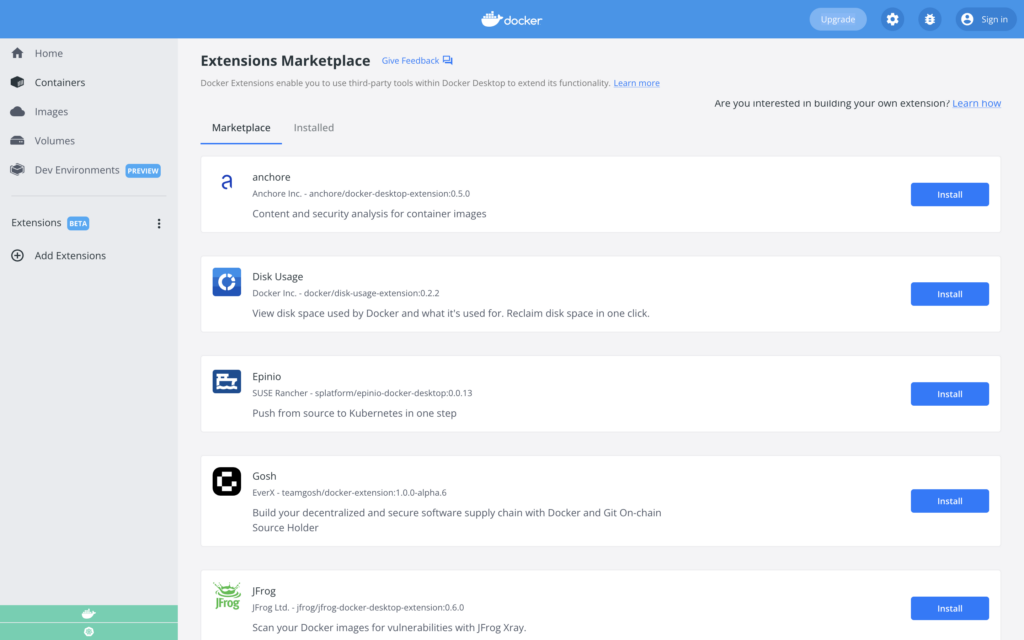Docker Inc. Adds Extensions to Desktop Tool to Improve Productivity
At its DockerCon 2022 event today, Docker, Inc. announced Docker Extensions, which aim to make it simpler for developers to discover and add complementary development tools to Docker Desktop. A total of 14 initial launch partners created Docker Extensions thus far, including JFrog, Red Hat, Snyk and VMware.
In addition, Docker, Inc. is also making available a Docker Extensions software development kit (SDK) to enable individual developers, partners and enterprise IT teams to build their own extensions.
Finally, the company announced the generally available release of Docker Desktop for Linux alongside existing versions of the development tool that are already available for Windows and macOS desktops.
Docker, Inc. CEO Scott Johnston says the goal is to reduce the friction that developers encounter when setting up development environments. Reducing that friction also serves to make building container applications accessible to a wider range of developers, he notes.
Steve Chin, vice president of developer relations for JFrog, added that by taking advantage of, for example, extensions created by JFrog it will become easier to invoke the capabilities of its continuous integration/continuous delivery (CI/CD) platform as well as its tools for inspecting code.
There are already more than 14 million developers building container applications. However, as the level of friction associated with building those applications continues to decline, the total number of developers building container applications could reach the tens of millions. In the meantime, existing developers of container applications should be able to take advantage of Docker Extensions to increase their overall productivity, says Johnston.
Most recently, Docker, Inc. picked up an additional $105 million in financing that, among other things, will be applied to extending the reach of the Docker container application development tools into the realm of serverless computing frameworks and emerging WebAssembly (Wasm) and Web3 platforms. Overall, Docker, Inc. claims development teams that build applications using containers release 13x more frequently, improve productivity with new technologies in 65% less time and compress by 62% the mean-time-to-remediation (MTTR) of security vulnerabilities.
The company also claims to have more than 56,000 commercial customers, including over 70% of the Fortune 100, nine of the 10 top technology companies, eight of the top 10 banks, eight of the top 10 retailers, eight of the top 10 media companies and seven of the top 10 health care companies. Docker, Inc. also reports year-over-year annual recurring revenue increased by a factor of four over the previous year.
It’s not clear what percentage of new applications are being constructed using microservices based on containers rather than as monolithic applications. However, as more container applications are deployed in production environments it becomes much simpler to add new capabilities by replacing containers. The IT industry as a whole is witnessing the equivalent of a Cambrian explosion of innovation that has been enabled by containers, notes Johnston.
The challenge, of course, is that as the number of dependencies between microservices continues to increase, the overall application environment can be challenging to maintain at scale. Container applications are more resilient than monolithic applications because whenever a microservice is not available, calls can be rerouted to other microservices. However, that rerouting typically results in degradation of application performance; it can be challenging to identify the root cause of an issue given all the dependencies that have been created. Despite those challenges, the benefits of containers as a software artifact still far outweigh any operational issues that arise.





